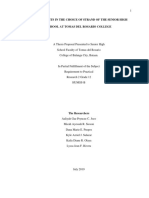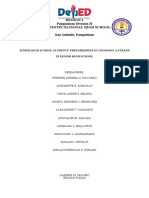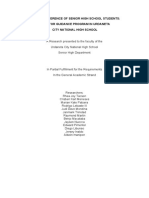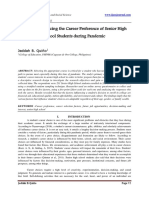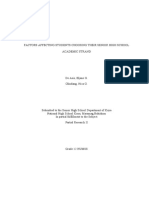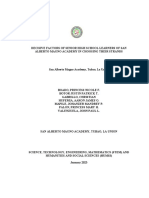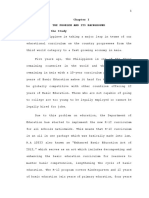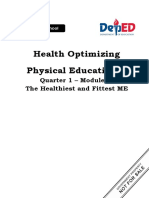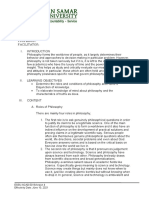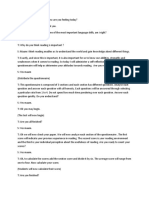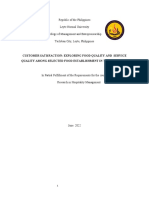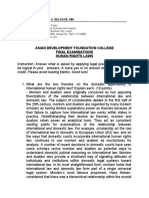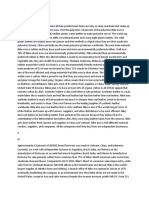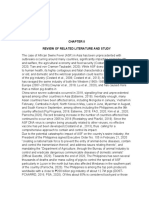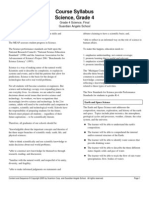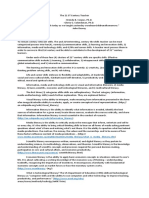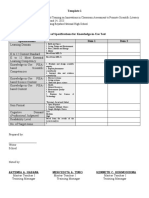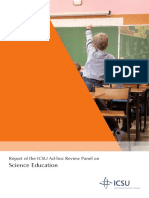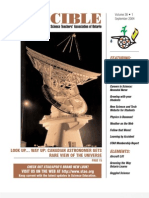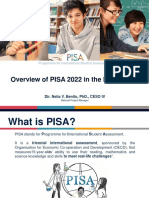0% found this document useful (0 votes)
443 views30 pagesResearch Ni April
The document discusses a study comparing senior high school track preferences to college program preferences among students in San Policarpo, Eastern Samar. A survey was conducted of senior high school students to identify factors influencing their choice of undergraduate program and how many would pursue track-related college degrees. The researchers found most respondents who took the Accountancy, Business and Management strand in senior high school planned to study related fields like accountancy or business administration in college. However, some respondents also chose non-track related fields like psychology or information technology due to factors like future career path, personal interest and capabilities.
Uploaded by
Angelo NuguitCopyright
© © All Rights Reserved
We take content rights seriously. If you suspect this is your content, claim it here.
Available Formats
Download as DOCX, PDF, TXT or read online on Scribd
0% found this document useful (0 votes)
443 views30 pagesResearch Ni April
The document discusses a study comparing senior high school track preferences to college program preferences among students in San Policarpo, Eastern Samar. A survey was conducted of senior high school students to identify factors influencing their choice of undergraduate program and how many would pursue track-related college degrees. The researchers found most respondents who took the Accountancy, Business and Management strand in senior high school planned to study related fields like accountancy or business administration in college. However, some respondents also chose non-track related fields like psychology or information technology due to factors like future career path, personal interest and capabilities.
Uploaded by
Angelo NuguitCopyright
© © All Rights Reserved
We take content rights seriously. If you suspect this is your content, claim it here.
Available Formats
Download as DOCX, PDF, TXT or read online on Scribd
/ 30












